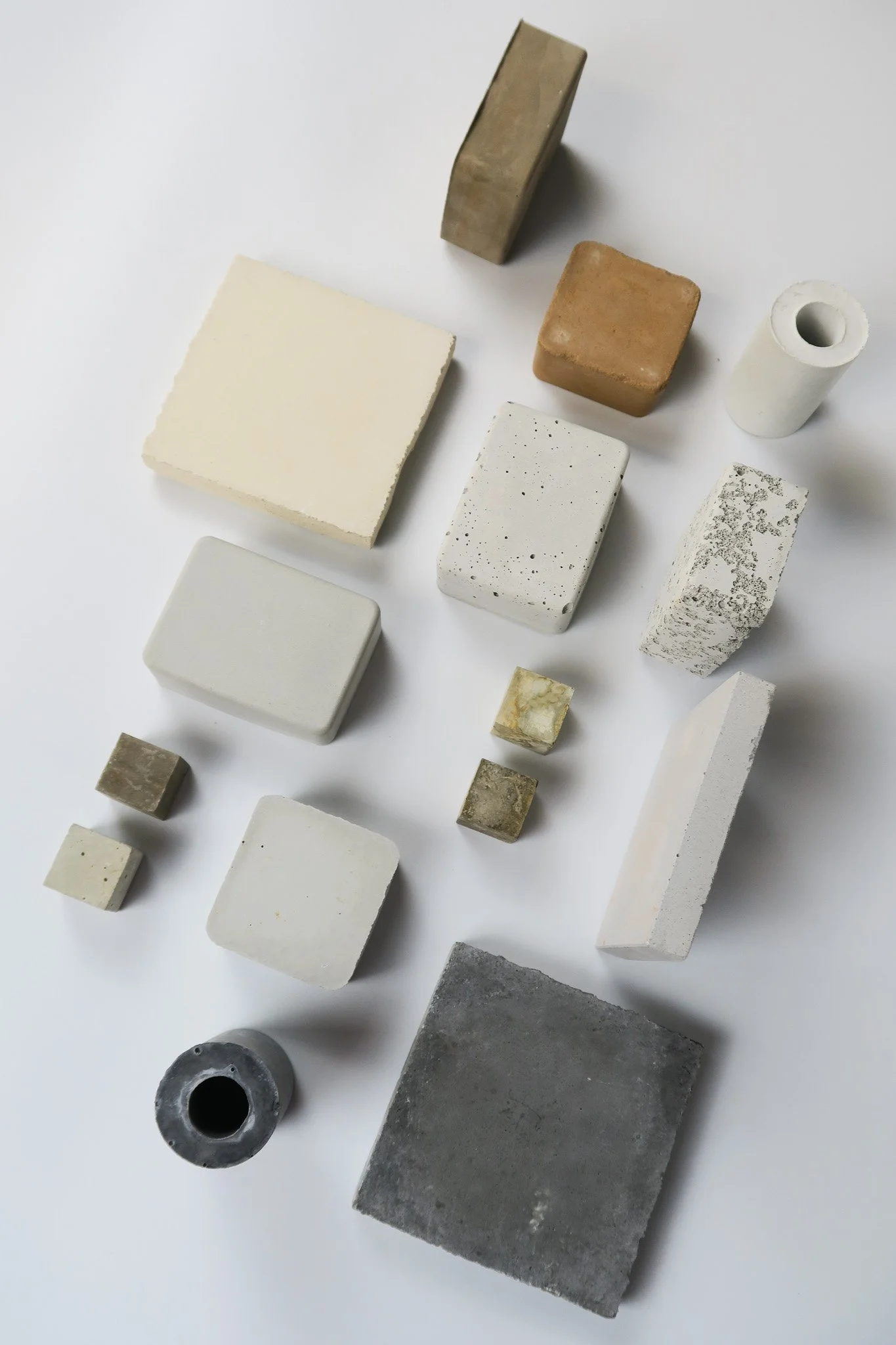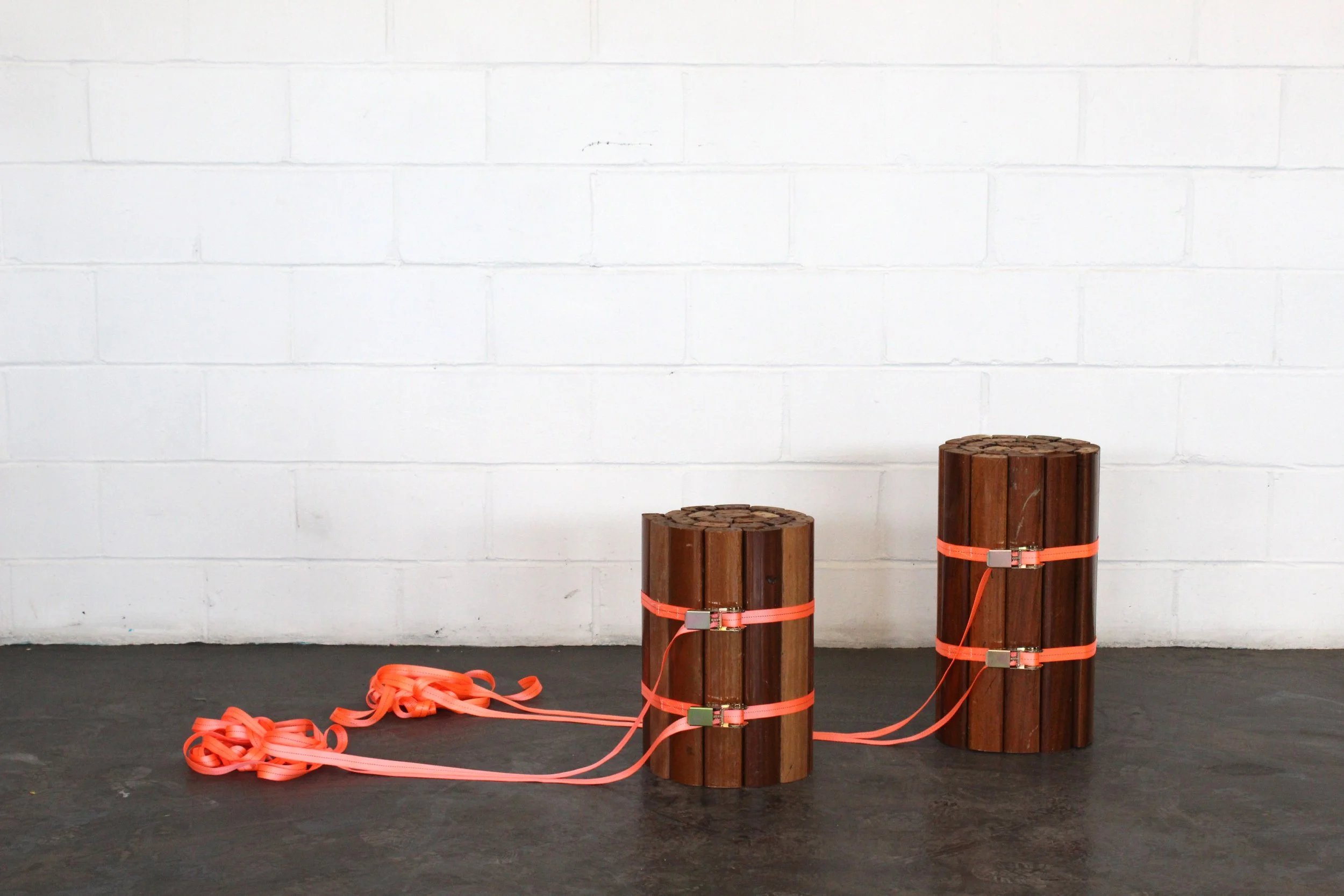Purposefully Repurposing at LDF
Amongst the furniture, product launches, immersive installations and evening events, London Design Festival always offers its fair share of material innovations during the week long, city wide event. Given the ongoing concerns regarding how human consumption is impacting the climate, the environment (both natural and urban), and biodiversity, it's no surprise that more and more designers are turning their attention to the problem and seeking alternative materials and processes.
A common theme over the past decade or more has been to repurpose existing materials, and with good reason. Reusing materials foregoes any reliance on long-standing extraction industries and damaging manufacturing processes while saving useful materials from going to waste. On paper, it’s all pretty obvious stuff, but in reality, there has been some reluctance to make a change. Or in the case of budding eco-conscious designers and makers, an uphill struggle to produce economically viable solutions at volume. Yet slowly but surely, it seems more and more are moving in the same, hopeful, direction.
On learning that the leather, foams and films on display by Taiwanese brand FILIE at Material Matters were made from recycled waste, you could be forgiven for assuming that they were derived from any number of plastic waste or even organic byproducts. But rather surprisingly, they are in fact produced from end-of-life cycle car windshields. There is a stark contrast between the new, soft and entirely pliable fabric-like materials and the original rigid and tough glass surface, although they do still share at least one core attribute: durability. In order to fully appreciate this rather bizarre transformation, it is important to understand a little more about the ubiquitous substance that glazes every single one of the estimated 1.4 billion motor vehicles in use worldwide. Windscreens are generally made of laminate safety glass, which requires 2 sheets of glass and a layer of polyvinyl butyral (PVB). While glass is liable to break and shatter under the right conditions, PVB prevents the latter, thus reducing potentially fatal injury.
The PVB is extracted first by crushing the safety glass, followed by mechanical and chemical treatments. This substance is then melted and reformed into sheets that make up the FILIE materials range. These include a highly durable alternative to leather, a 0.6mm film coating and a recently developed rubber-like foam material ranging between 2 to 6mm.
Tackling plastic waste remains an ongoing occupation for many designers and brands, not least the Slovakian design duo crafting plastics! The company are responsible for NUATAN, and material that they describe as “a new generation of bioplastic material, which is both biobased, made of 100% renewable raw resources, biodegradable, and leaving no microplastics behind nor contributing to global warming.” Following on from their showing at Alcova during Milan last year, the team bought the latest version of their Senseables collection, a series of stackable stools made from their unique material. Adding to this, however, each 3D printed object was coated in solar active bioskin that made the stools change colour in response to the current UV index level - thus turning them into radiation gauges as well as functional and rather playful pieces of furniture.
Recent graduate of Central Saint Martins Rosy Napper chose ceramics as her material of focus during her final year of study and has since launched ReCinder. The brand takes a novel approach to the ancient discipline, working with 100% recycled materials. As opposed to industrially processed clay, Rosy creates waste-based ceramics from discarded broken ceramics and waste ash that has been diverted from landfill, and can be used for tiling, furniture and tableware. The outcome of extensive research and development, the material is also self-glazing, thus diverting the need for conventionally mined and environmentally damaging raw materials. Indeed, as Rosy points out, “ReCinder uses just 53% of the energy required to fire a conventional porcelain tile. For every 1m2 of ReCinder tiles produced, 24kg of waste is diverted from landfill.” But that’s not all, under the right conditions the material showcases another unique quality, its translucency, which also makes it an ideal choice for lighting. Through her research, Rosy has also discovered that ReCinder also has the ability to filter those ever-present, but ultimately disruptive blue lights, which are present in all energy-efficient light bulbs as well as our screen-based devices.
Reducing industrial waste and carbon emissions is another key objective of Re-Block, although in this instance the output is an alternative to environmentally damaging concrete. The team, composed of Dr. Zhicheng Liu, a materials scientist, Yihan Dong, a design engineer, Kara Wong, an interaction designer, and Dian Lin, an industrial designer, is dedicated to achieving net-zero emissions by 2050. Composed of red mud, fly ash, blast furnace slag, and recycled aggregates, Re-Block is developed to recycle industrial waste into a low-carbon material, which comes in a range of colourways. As Yihan Dong explains:
“At Re-Block, we believe that design is not just about creating visual beauty but also about solving real-world problems. The core of sustainable design lies in integrating environmental responsibility with innovation, making each creation not only visually pleasing but also impactful for the planet.”
Repurposing waste or discarded materials and assigning them with fresh value is at the heart of a new initiative set up by design duo Katie-May Boyd and Charlotte Kidger. Studio TIP is a creative practice intent on uplifting and utilising undervalued or overlooked materials and launched with an interactive installation, TIP TAKES in the entrance of the Barge House as part of Material Matters. To date, the pair have collected 2.5 tonnes of waste material donated by demolition contractors John F Hunt from a project in central London. While such projects aren’t rare, neither in big cities or across the country, such donations are. The project is also sponsored by B Corp built environment engineering and sustainability consultancy, Elliott Wood, making collaboration a key component in the gathering of the materials.
But having a stock pile of these types of materials is only a starting point. Due to the inherent nature of demolition, they aren’t as consist or indeed immediately usable as virgin materials. While both require machining and forming there are few systems in place to organise the waste materials, which is where Studip TIP steps in with a new methodology that looks set to collectively benefit industry, community, and the environment. TIP TAKES was intended to leave no trace, with all the materials available to the audience to take away at the end of the installation. Information about weight, dimensions, volume and the such like were available to visitors via a simple QR code, and the organising and delivery of such information into “material passports” will be a cornerstone of how the team moves the project forward. And it doesn’t end with the materials being taken away by prospective clients, in a true closing of the loop the team is also intent on knowing what happens to them, as they explain:
“Any materials taken by visitors for reuse will have the creative vision recorded in the passport, and 6 months after the installation, Studio TIP will follow up on its progress, publishing a research report documenting the process and journey of this investigation.”
We look forward to seeing more from this systemically progressive project along with all the other LDF projects we spotted that are purposefully repurposing materials.
This article was first published by Design Insider.







